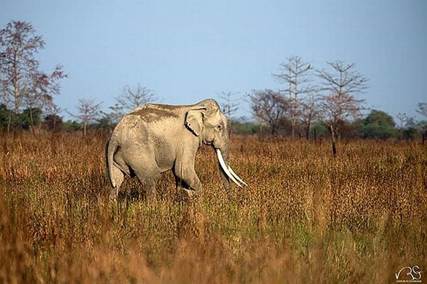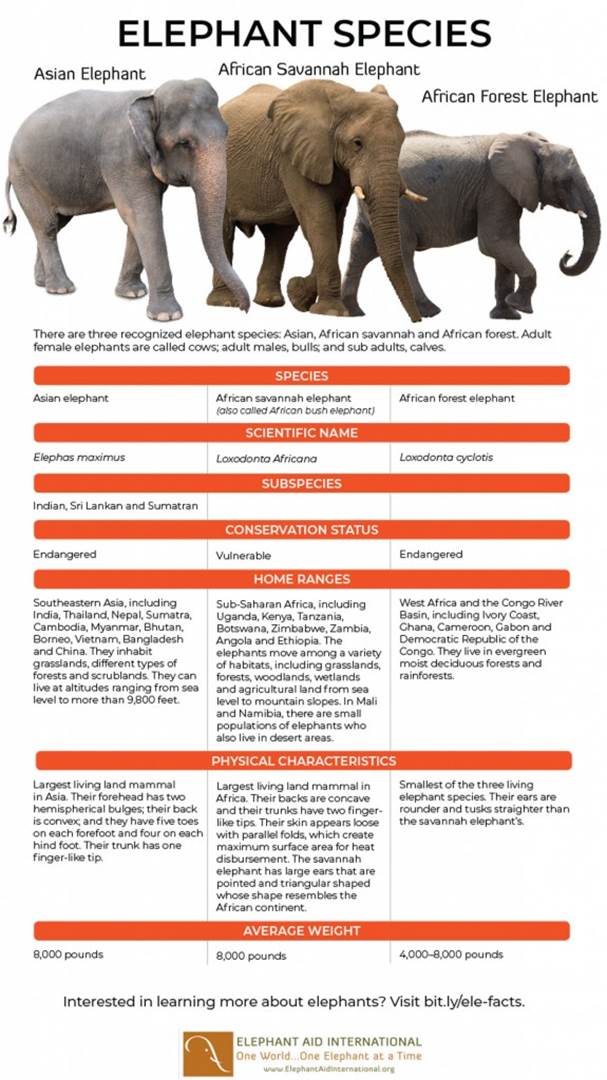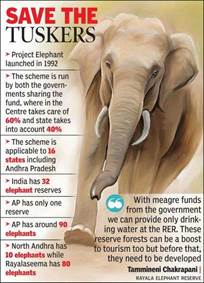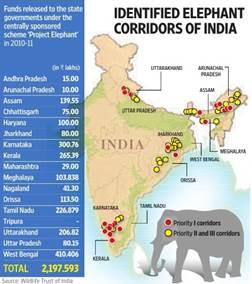WORLD ELEPHANT DAY

Copyright infringement is not intended
Context: World Elephant Day is observed every year on August 12 with the goal of recognising their importance in our ecosystem.
Details:
- This day emphasises on raising awareness of the dangers that elephants encounter in their lives.
- Poaching, habitat loss, and mistreatment in captivity are some of the common threats that these animals usually come across.
- It is crucial for people to understand how important they are to the ecosystem and do everything in their power to safeguard them.
- This day was first observed in the year 2012 by two Canadian filmmakers Patricia Sims and Michael Clark along with the Thailand-based Elephant Reintroduction Foundation.
- And ever since 2012, Patricia Sims has taken the lead on World Elephant Day. She has an organisation called the World Elephant Society. Her organisation has managed to create awareness about the threats faced by the elephants and the necessity to protect them on an international level.
- Elephants are crucial as they help in maintaining the ecosystems for other species. The loss of elephants can be detrimental to the environment as it can facilitate the weakening of the structure of nature.
- According to National Geographic, the elephant population has declined by an estimated 50 per cent over the past 75 years. As per the reports, there are an estimated 20,000 to 40,000 Asian elephants left.
- Elephants are the largest mammals on earth.
- Elephants pick up objects and greet other elephants with the help of their trunk.
- Their skin is 2.5cm thick in most places, and they often take mud baths to protect their skin.
- Interestingly, elephant’s trunk has around 150,000 muscle units.

Basic Details
- The Indian elephant is one of three extant recognised subspecies of the Asian elephant and native to mainland Asia.
- Asian Elephant is distributed throughout the Indian subcontinent and Southeast Asia, from India in the west, Nepal in the north, Sumatra in the south, and to Borneo in the east.
- The Asian elephant is the largest living land animal in Asia.
- Since 1986, the Asian elephant has been listed as Endangered on the IUCN Red List, as the population has declined by at least 50 percent over the last three elephant generations, which is about 60–75 years.
- It is primarily threatened by loss of habitat, habitat degradation, fragmentation and poaching.
- African elephants are listed as “vulnerable” and Asian elephants as “endangered” in IUCN Red List of threatened species.
- The South Indian states of Karnataka, Kerala, Andhra Pradesh and Tamil Nadu are home to nearly 44% of the elephants.
- Karnataka has the highest number of elephants: 6049
- The elephant has been accorded the highest possible protection under the Indian wildlife law through its listing under Schedule I of the Wildlife (Protection) Act, 1972.
- Project Elephant (PE) was launched by the Government of India in the year 1992 as a Centrally Sponsored Schemewith following objectives:
- To protect elephants, their habitat and corridors.
- To address issues of man-animal conflict.
- Welfare of captive elephants
- Elephant census, is conducted once in 5 years under the aegis of Project elephant. Methods employed: direct counting and dung decay formula.
- Campaign Haathi Mere Saathi came into existence by the Ministry of Environment and Forests in partnership with Wildlife Trust of India.
- The aim of this campaign is to increase public awareness and develop friendships between elephants and the local population. It is to conserve and protect elephants.
- The Monitoring the Illegal Killing of Elephants (MIKE) programmeis an international collaboration that measures the levels, trends and causes of elephant mortality, thereby providing an information base to support international decision-making related to conservation of elephants in Asia and Africa.
- The MIKE Programme was established by the Convention on International Trade in Endangered Species of Wild Fauna and Flora (CITES)by Resolution 10.10 adopted at the tenth Conference of the Parties in 1997.
- There are currently 28 sites participating in the MIKE programme in Asia, distributed across 13 countries: India has 10 sites.

|
Elephant Range |
Elephant Reserve |
State |
Total Area |
|
Eastern India |
1. Mayurjharna ER |
West Bengal |
414 |
|
2. Singhbhum ER |
Jharkhand |
4530 |
|
|
3. Mayurbhanj ER |
Odisha |
3214 |
|
|
4. Mahanadi ER |
Odisha |
1038 |
|
|
5. Sambalpur ER |
Odisha |
427 |
|
|
6. Badalkhol-Tamorpingla |
Chhattisgarh |
1048.30 |
|
|
North Brahmaputra |
1. Kameng ER |
Arunachal Pradesh |
1892 |
|
2. Sonitpur ER |
Assam |
1420 |
|
|
South Brahmaputra |
1. Dihing-Patkai ER |
Assam |
937 |
|
2. South Arunachal ER |
Arunachal Pradesh |
1957.50 |
|
|
Kaziranga |
1. Kaziranga – Karbi Anglong ER |
Assam |
3270 |
|
2. Dhansiri-Lungding ER |
Assam |
2740 |
|
|
3. Intanki ER |
Nagaland |
202 |
|
|
4. Singphan ER |
Nagaland |
23.57 |
|
|
Eastern Dooars |
1. Chirang-Ripu ER |
Assam |
2600 |
|
2. Eastern Dooars ER |
West Bengal |
978 |
|
|
E. Himalayas (Meghalaya) |
1. Garo Hills ER |
Meghalaya |
3,500 |
|
Nilgiri –Eastern Ghat |
1. Mysore ER |
Karnataka |
6724 |
|
2. Dandeli ER |
Karnataka |
||
|
3. Wayanad ER |
Kerala |
1200 |
|
|
4. Nilgiri ER |
Tamil Nadu |
4663 |
|
|
5. Rayala ER |
Andhra Pradesh |
766 |
|
|
South Nilgiri |
1. Nilambur ER |
Kerala |
1419 |
|
2. Coimbatore ER |
Tamil Nadu |
566 |
|
|
Western Ghat |
1. Anamalai ER |
Tamil Nadu |
1457 |
|
2. Anamudi ER |
Kerala |
3728 |
|
|
Periyar |
1. Periyar |
Kerala |
3742 |
|
2. Srivilliputtur ER |
Tamil Nadu |
1249 |
|
|
Northern India (Uttaranchal-U.P.) |
1. Shivalik ER |
Uttarakhand |
5405 |
|
2. Uttar Pradesh ER |
Uttar Pradesh |
744 |





1.png)
